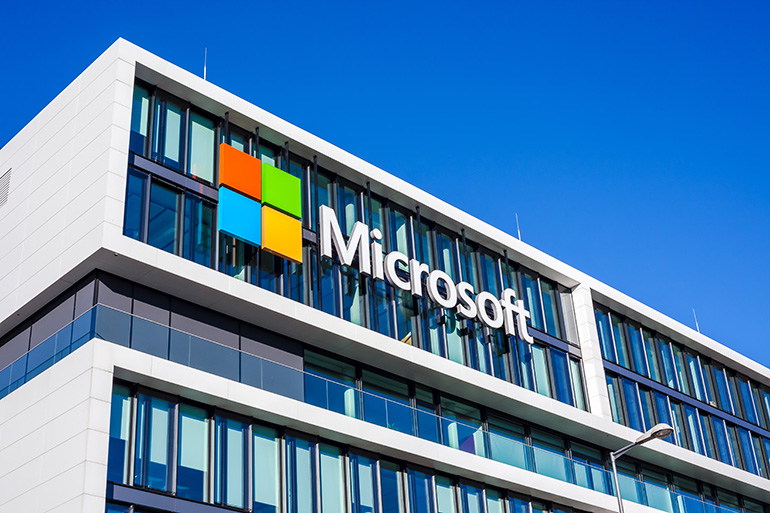What impact could Musk’s $30 billion deal with Microsoft have on the AI supercomputing landscape?

Microsoft Partners with X.AI for New Data Center Project
Microsoft is entering a significant collaboration with Elon Musk’s xAI startup, aimed at developing a new data center estimated to cost $30 billion. This partnership may also secure up to $70 billion in additional financing, potentially raising the total investment to $100 billion. OpenAI, a company originally co-founded by Musk, has had a complicated relationship with him following his departure amid disputes over its transition to a profit-driven model. Currently, Musk is engaged in legal challenges against OpenAI concerning its for-profit conversion.
Overview of the Agreement and Its Goals
This new endeavor, dubbed the AI Infrastructure Partnership (AIP), includes investment from major financial entities like BlackRock and the Abu Dhabi sovereign fund MGX. As NVIDIA functions as the technical advisor, the partnership aims to create massive “AI Factories,” which are anticipated to be operational by mid-2026. Microsoft is positioning itself strategically in the AI sector through this collaboration, even while it simultaneously supports its own AI projects, such as OpenAI’s expansive $500 billion Stargate initiative.
Microsoft’s Strategic Moves
Microsoft’s involvement with xAI highlights its multifaceted approach in the AI landscape. Although heavily investing in OpenAI, Microsoft is also developing its in-house models, such as the MAI series, led by DeepMind co-founder Mustafa Suleyman. By partnering with xAI, the company enhances its access to computing resources and gains crucial insights into xAI’s infrastructure, helping it diversify its AI model offerings.
Additionally, Microsoft is facilitating the integration of xAI’s technology into its platforms. The AI models from xAI, including Grok, could soon be available for developers through Azure, ensuring that the cloud service can maintain revenue regardless of the model’s origin.
The Infrastructure Ambitions of xAI
The compute power required for ventures like xAI’s Colossus initiative is staggering. Sites in Memphis and Atlanta are at the center of this ambitious project. To date, the Memphis facility boasts an impressive inventory of 200,000 GPUs, and the ultimate goal is to exceed one million GPUs. The estimated costs solely for the hardware may surpass $30 billion, not accounting for additional infrastructural needs like power and storage.
Energy and Cooling Challenges
As the demand for energy increases, challenges also arise in managing these data centers. The Memphis facility currently relies on a combination of grid power and mobile generators, with future plans to enhance its power capacity significantly. Collaborations with energy firms like NextEra Energy and GE Vernova are part of the strategy to address energy efficiency and sustainability in the data center operations.
Moreover, controlling the temperature for these dense GPU arrangements is another hurdle. While the Atlanta site uses traditional air cooling, Memphis employs liquid cooling, showcasing xAI’s innovative approach to infrastructure.
Differentiating Through Real-Time Data
Beyond the hardware, xAI is also focusing on how its models can stand out in a competitive market. One of its key features is integrating real-time data from social media platforms like X (formerly known as Twitter), offering a dynamic edge over those reliant on static datasets. This real-time capability is an aspect that Musk has touted as a unique selling point for xAI’s technology.
The Competitive Landscape
The Microsoft-xAI partnership is part of a broader competition involving major players in the AI market:
- Google DeepMind: Continues to leverage its vast infrastructure but faces competition from newer ventures like xAI.
- Meta: Maintains a notable presence with its own AI developments and focuses on open-source projects.
- Anthropic: Backed by Amazon, it represents another competitor in the AI landscape, intensifying the challenge for companies like Microsoft.
Openness vs. Consolidation
In the current AI ecosystem, there seems to be a tension between openness and the consolidation of resources necessary for building AI solutions. While advancements like xAI’s plans to open-source future models exist, the underlying infrastructure often requires substantial financial investment, consolidating power among the largest companies. Microsoft’s strategic approach reflects an understanding of the complex dynamics at play in the AI sector, as it navigates its investments across various AI entities to secure a competitive advantage.





